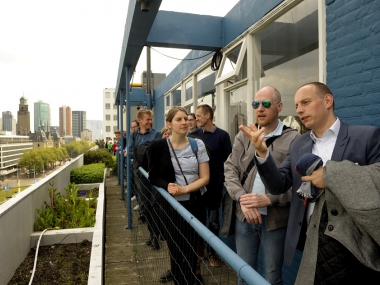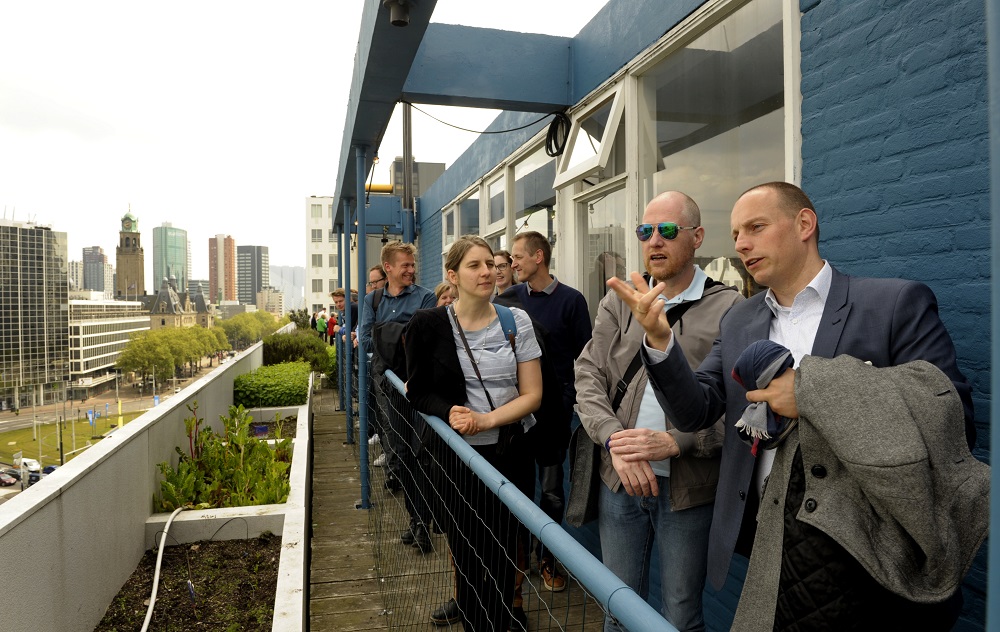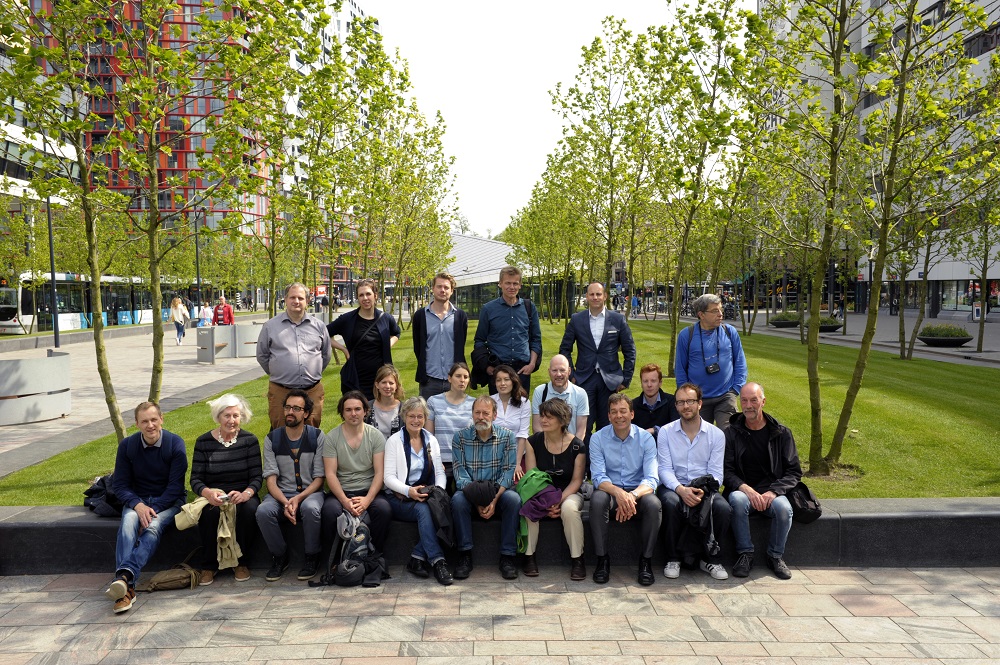Antwerp Visits Rotterdam to Share Knowledge on Urban Water Management
Edited on
08 June 201712 May 2017 - It is raining cats and dogs as we make our way to Rotterdam with a group of city laboratory workers - residents and associations from Sint-Andries and specialists in water management, design and implementation and climate adaptation. The rain does not pose a problem since that is what this inspiration tour is all about!
Article is written by Sofie Verhesen (City of Antwerp)

Learning From Other European Cities
Sint-Andries is the Antwerp-based laboratory that tests out measures aimed at preparing the city for climate change. Floods, heavy rainfall, prolonged drought and heatwaves are risks that are on our horizon. By responding to climate change now rather than later, we can implement measures that will turn the city into a more attractive, greener environment. The ability to bounce back after a shock or disaster is the very essence of resilience.
Antwerp is a city within the URBACT Resilient Europe network, which consists of eleven European cities that share information on resilience. The network is spearheaded by the City of Rotterdam, which has already instigated a whole range of experiments we can learn from today.
What Does Resilience Mean For Cities?
Corjan Gebraad, Resilient Rotterdam Project Manager, gives us an introduction to resilience. “Resilience ensures that the city is ready for the challenges and opportunities of the future. Developments such as climate change, digitisation and globalisation bring new risks, but also new opportunities. So, the term resilience goes beyond climate adaptation. It is not just about infrastructure - green roofs, greater drainage capacity - it also involves a strong social factor; people with strong networks are more resilient and are able to help one other."
Roof With A View
Paul van Roosmalen, Program Manager with Multifunctionele Daken, draws us in with his story about multifunctional roofs. "Rotterdam is a high-rise city, with mostly flat roofs that can act as additional public space. While installing as many green roofs as possible, Rotterdam is also looking to use rooftops for water buffering, energy production and for social functions."
Making Use Of Opportunities In The Community
We then hear the story of Marcel van Blijswijk, Project Manager for the 'Kop van Feijenoord' area. His role involves seeking to improve the socio-economic mix of the Feijenoord social housing neighbourhood. An essential role, but initially very top-down in character. He successfully extended this role to make use of opportunities in the neighbourhood, by matching the talents of the residents with specific needs in the neighbourhood. This really is 'resilience' in action.
Rotterdam As A Sponge
Lastly, we meet Jorg Pieneman, Water Program Manager, who tells us about rainwater harvesting. Rotterdam has an ambitious goal, to say the least: no drop of rainwater will go into the drains by 2050. To achieve this goal, the public domain will be used as a sponge that holds rainwater during wet periods and slowly infiltrates the water into the ground. Related experiments are now underway in the Zomerhofkwartier, where a large rain garden, an iconic water square (the Benthemplein), has been constructed and experiments are underway to repurpose the Hofbogen - an abandoned railway bridge. Who knows... maybe Rotterdam will have a high speed rail line within a matter of years.



Submitted by rkoskamp on
